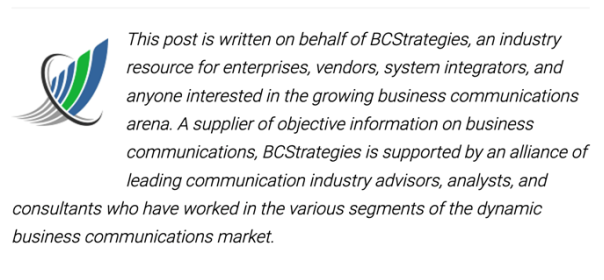I’ve always seen the business communications space as a subset of the larger AV community. What we refer to as the unified communications product category is just a very specific use case for audio and video technologies. Yet for some reason we always treated UC as a completely separate universe of
products with no overlap. Recent years have shown that the lines between business and home technology have blurred to the point where we are seeing overlap everywhere.
Hybrid workers are using the same products in both their home offices and the offices they go to. Vendors of residential AV technology are finding that they can design workplace products and join the super-hot market for business AV solutions. The result is a lot more options, from a lot more vendors, for meeting room and home office AV products.
With this in mind, it wasn’t completely surprising that CEDIA, an event covering smart home technology, partnered with the Commercial Integrator Expo for their September event in Denver. I just returned from the co-event, and I learned that those of us covering the business technology space need to start paying attention to the residential space as well.
I appreciated exploring beyond my usual UC-based coverage and , as part of the IMCCA UC Track at the event, and learning more about the larger AV world. Interviews with companies like Just Add Power helped me better understand how we move AV content over our IP networks. And talking with the team at SurgeX got me up to speed on power requirements for all our AV installations, including our video meeting rooms.
A small handful of analysts who generally cover business communications, were invited to speak at the event on topics such as meeting equity, video meeting burnout, AI in the meeting room, business streaming/recording setups, and other topics relevant to today’s hybrid workforce. While we are used to discussing these topics at business-centric conferences, it was new for many of us to be addressing a home technology crowd.
A quick visit to the vendor booths at the event made it perfectly clear why business topics would be relevant to this crowd. Many of these home technology vendors are adapting their technology to support businesscustomers. Nearly every booth I visited started me out by showing their traditional residential (“resi”) products, and then would share their new commercial lineup of workplace products. As expected, commercial products included AV technologies such as displays and sound systems for bars and churches. More surprisingly, a lot of resi vendors had UC meeting room solutions to support MS Teams and Zoom rooms.
I visited booths of vendors known for home office furniture, who now offer videobars for Microsoft Teams and Zoom meetings. It seemed like almost anyone has a videobar and can build you a Zoom or MS Teams room one way or another. The crossover between resi and commercial AV isn’t just starting, it’s well underway.
This shouldn’t be surprising -- today’s business and residential audio and video products generally rely on the same underlying technologies. If you look “under the hood” of a business meeting room audio system, and a home theater audio system, you will find similar, if not the same, components. The massive rise in home workers, and the increased use of video meetings at the office, has created a larger market for these products, so anyone who can support it, is going to support it.
The global shift towards hybrid work environments has been a catalyst for this transformation. In the wake of the COVID-19 pandemic, organizations around the world were forced to adapt to remote and hybrid work models. We quickly found that remote workers were just as productive, and often happier, working at home compared to working at the office. It’s smart business to support these workers by providing flexible and effective communication and collaboration tools, whether they are in a corporate office or their own living rooms.
This created an obvious opportunity for resi AV vendors and is responsible for the blurring of lines between residential and commercial AV technology. Employees are increasingly using the same devices, such as high-quality microphones, headsets, webcams, and soundbars, for both professional video conferencing and personal entertainment. As a result, manufacturers have been able to redesign their existing resi product technology into new commercial gear.
The collaboration between CEDIA and the Commercial Integrator Expo is designed to draw attention at the forefront of this big change in the resi/commercial AV industry. By combining forces, these two events acknowledge that the boundaries between residential and commercial technology are becoming increasingly fluid. Working together, these organizations can help both vendors and customers navigate our new world of blending AV for home and work.
In an ideal world, the blend would be complete. Homeowners and business professionals would be able to use their AV solutions to effortlessly transition between their personal and professional lives. Imagine seamlessly moving from a video conference call in your home office to enjoying a high-definition movie experience in your living room, all using the same AV equipment. Perhaps that ideal world isn’t too far in the future after all.
In conclusion, the partnership between CEDIA and the Commercial Integrator Expo is not just an event collaboration but a reflection of the broader transformation happening in the AV integration industry. The integration of residential and commercial technologies is driven by changing lifestyles, the demands of hybrid work environments, and shared technological foundations. As these two worlds continue to converge, we can expect a future where technology effortlessly adapts to our ever-evolving needs, both at home and in the workplace. The possibilities are boundless, and the journey promises to be an exciting one for manufacturers, integrators, and end-users alike.











